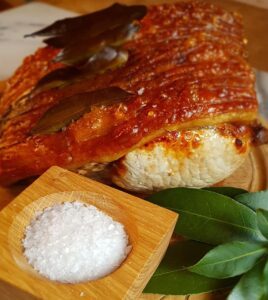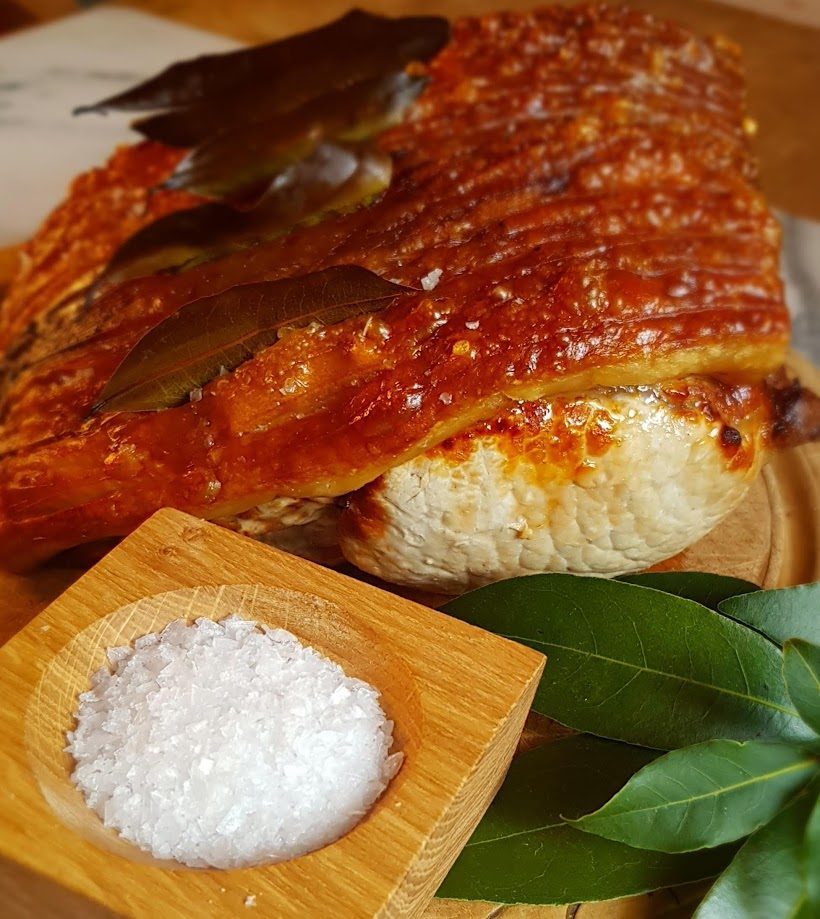Such is my love for pork-based dishes that my girl friends call me “Pork Girl,” and this surely is my favourite of meals, with juicy tender meat and of course the all-important crunchy and burnished crackling. Although traditionally served on Christmas Eve along with caramelised brunede kartofler potatoes, I cook this all winter on a Sunday evening along with a dish of red cabbage and a big jug of Danish gravy. Leftovers are delicious served in thin slices on rye bread, or fried with potatoes and topped with a fried egg; the ultimate in winter hygge Sunday roast dinners!
 Ingredients (serves 6)
Ingredients (serves 6)
1.5k pork loin with rind iIf you have problems sourcing loin, pork belly makes a good alternative).
2 carrots
1 onion
Sea salt
Bay leaves
- Score the pork rind at ½ cm intervals using a craft knife, or ask your butcher to do this for you; it is really important you don’t go down as far as the meat, otherwise the juices will rise up and stop the crackling from becoming crisp.
- Preheat the oven to 250 degrees and boil the kettle. Lay the pork in the tin with the rind face down (yes, really), pour in boiling water so the rind is covered and then place in the centre of the oven for 20 minutes.
- Remove the baking tin from the oven and carefully pour away the water. Turn the pork over so the rind is face up, then rub salt into the grooves. Pop a couple of bay leaves into the slices in the skin and pour in 500ml fresh cold water; at this stage it is really important that the pork is laying as flat as possible so that the crackling crisps evenly, so if necessary prop it up with some crumpled tin foil.
- Put the tray back in the oven, turning the heat down to 160 degrees, and cook for another 50 minutes to an hour and ten minutes, or until the internal temperature measures 65 degrees. Keep topping up the water if necessary.
- Remove the pork and carefully pour the water into a jug (save for making gravy). Turn the oven up to 250 degrees then put the tin back in the centre of the oven for another 10-15 minutes so that the crackling becomes golden and crispy. Do check it occasionally in case it starts to scorch; if any of the skin stars to blacken cover it with a little piece of tin foil.
- Remove the joint when a meat thermometer inserted into the pork reaches an internal temperature of 70-75 and the crackling is cooked to perfection. Let it rest uncovered for 10-15 minutes before carving along the crackling grooves when you are ready to serve (slice too early and the meat can turn grey).





